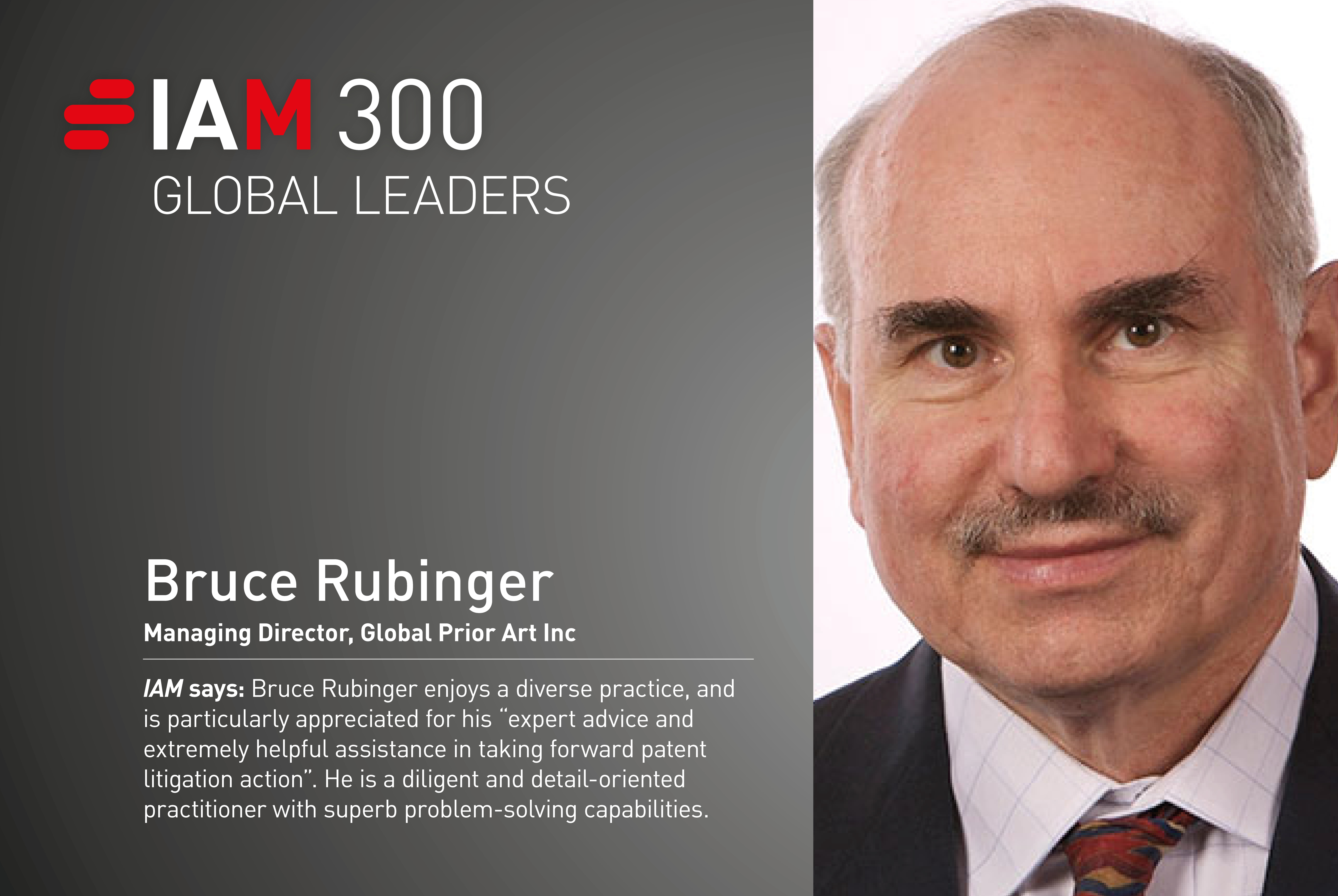Bruce Rubinger
How has global competition transformed IP decision making, and why is a new approach imperative to leverage this?
Huge changes have occurred. The pace of innovation has accelerated, there are many global competitors and the product lifecycle is shorter. The emergence of critical technologies in adjacent fields (eg, software, semiconductors and communications) is having a significant impact on competitive new product design and patent strategy. Filing activity indicates that many companies are focused on incremental changes, meaning that they are missing major shifts. We are seeing this in LiDAR, electric vehicle technology, advanced batteries, medical technology and solar, among others.
With regard to the above, can you tell us what this approach should look like?
A proactive IP strategy based on timely, accurate knowledge of the global IP and tech space, at a high level and the product-feature level. In contrast, companies are overwhelmed, sifting through mountains of data. The solution is a knowledge platform where IP decision makers have accurate data and analysis at their fingertips. Different levels of granularity are required for patent portfolio management or to guide the efforts of product development or prosecution.
Effective decision making requires the following:
- relevant and complete curated information;
- actionable insights to circumvent information overload;
- analysis that flags key inflexion points in technology, new entrants,
- competitive challenges and important patents; and
- a navigation system that puts the necessary custom information and insights in front of the decision makers.
In your view, what are the key challenges of bringing about transformation in the IP strategy space?
A big issue is the difficulty of measuring success – an IP strategy’s impact will not be visible for several years. Senior management often measure their IP team’s performance by the number of patents filed annually compared to its competitors. This results in filing large numbers of patents covering incremental changes; however, more than 50% of these could be invalidated with moderate effort. This system does not reward the strategic thinking of in-house IP leaders that create proactive policies.
Another problem is the outdated way in which IP departments are viewed. Companies spend millions on competitive intelligence, analysis and strategic planning. In contrast, an IP department with a knowledge platform has a deep understanding of the competitive space, which can complement and even exceed that of other departments. Patents also provide insights three to four years before they show up in high-level industry trends. Senior management still view IP departments as playing a defensive role, and IP departments struggle for funding and the chance to be at the table shaping corporate and product strategy.
You have authored numerous reports on tech trends, including one on Applied AI in Japan. What are some of the biggest changes you have seen in the AI ecosystem over the last 12 months?
Many clients raise questions about AI tool performance. News reports that AI will replace many skilled workers have also created anxiety. We have tested a range of AI tools over the past three years to confirm how well they perform compared to an expert. The biggest surprise was that leveraging these requires extensive effort by a subject-matter expert for training and analysing the rich body of patents identified. The payoff is the ability to analyse large, complex IP spaces. IP managers and subject-matter experts have more job security thanks to AI tools.
What were some of the biggest challenges facing your clients in the past 12 months, and how have you helped them to overcome these?
One client wanted to leverage IP information and analysis in a knowledge base to stimulate more patent filings by its R&D and product development teams. Facing budget pressure, it was essential to illustrate the importance of using advanced methods and document the benefits. Detailed maps were created to focus discussions of which paths were available and various solutions. The team realised that they had created several novel solutions, which resulted in strong patents and products.
Another interesting case was a trade secret matter that erupted after a well-known software company recruited someone from a start-up. The financial stakes – and emotions – were high. A search by our software experts uncovered references indicating that the alleged trade secret was actually known in the prior art.
Finally, a client was struggling to understand the dense IP LiDAR space. Human intelligence and an AI classifier identified five key technologies, which allowed the client to focus its efforts on the most promising ones while reducing spending on older, poor-performing technology.
Bruce Rubinger
Managing Director
[email protected]
Internationally recognised strategist for IP defence Dr Bruce Rubinger is managing director and founder of Global Prior Art. He specialises in uncovering strong prior art in high-stakes disputes in US and foreign courts. Dr Rubinger’s expertise also spans IP management, actionable landscapes, deployment of AI tools and knowledge platforms that empower portfolio strategy.
